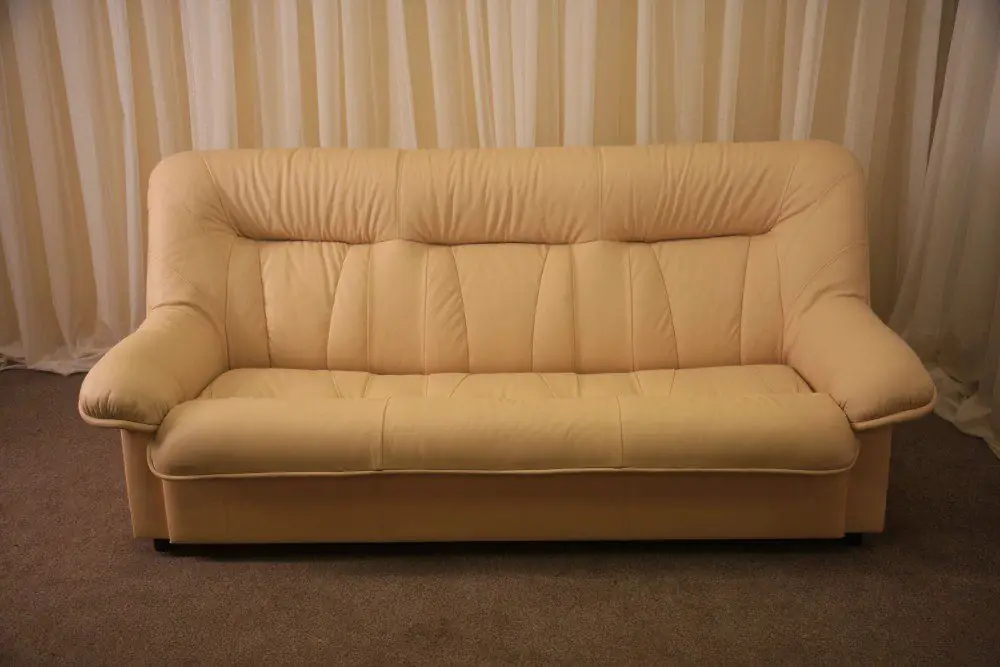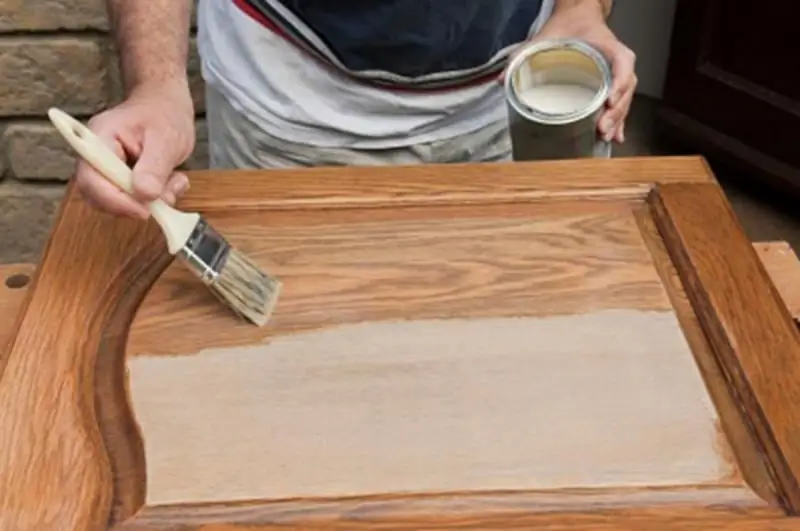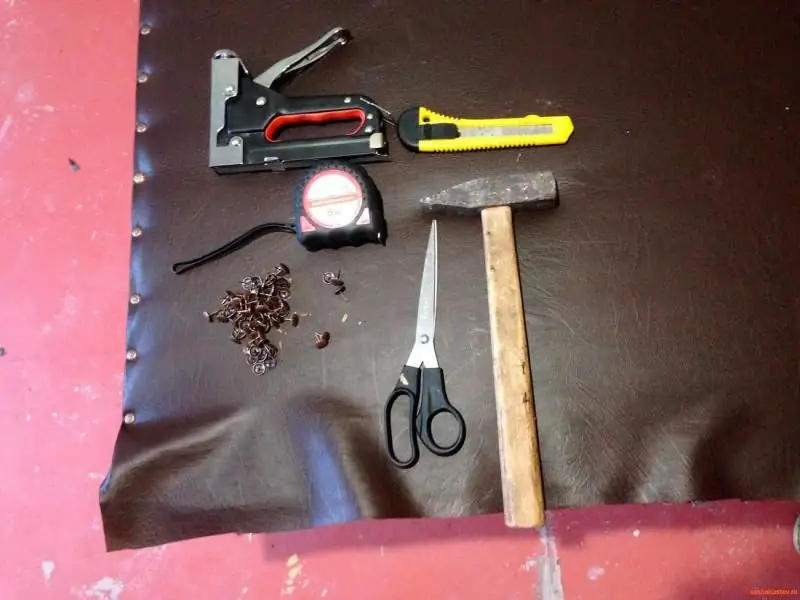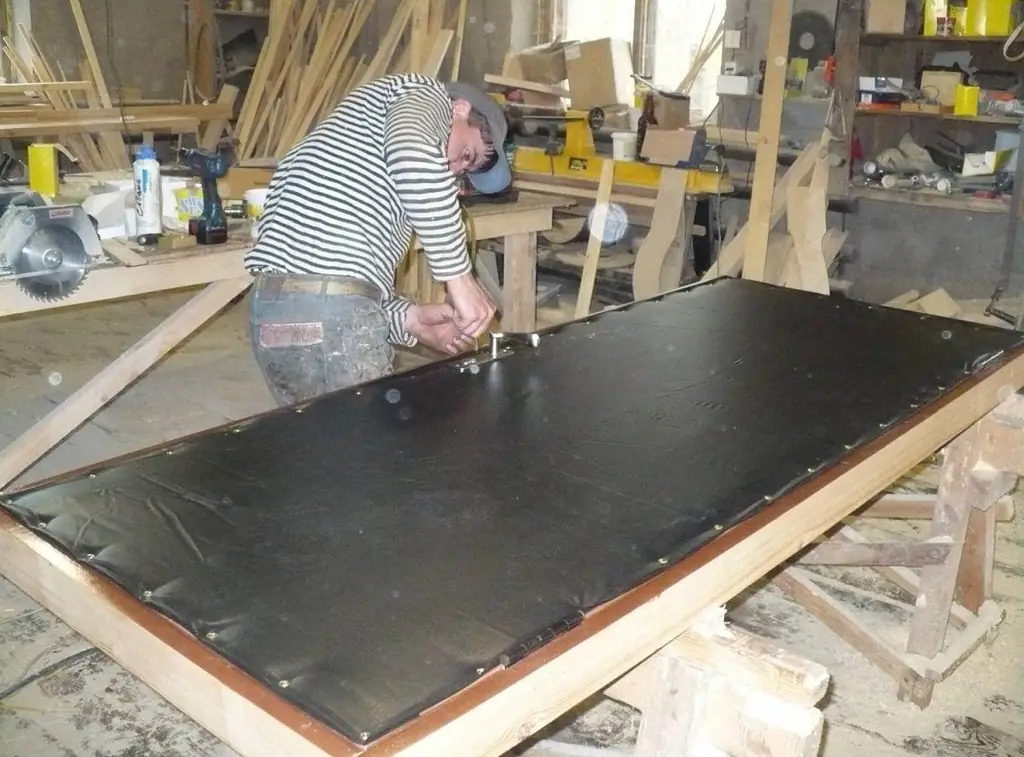
Table of contents:
- Author Bailey Albertson [email protected].
- Public 2023-12-17 12:53.
- Last modified 2025-01-23 12:41.
How to cover a sofa with your own hands

As you know, people are very strongly attached to convenient, favorite things. This is especially true for furniture. If your favorite sofa loses its original presentation, the upholstery on it is torn or frayed, then it should be replaced. But what if good memories are associated with this piece of furniture, and buying a new sofa is not cheap?
In this case, you can try to breathe a second life into your favorite thing. This is easy enough to do by dragging the old sofa with new fabric.
The main thing is to think carefully and plan all the work, and you will see that this process is completely uncomplicated, creative and interesting.
Content
- 1 We repair the wooden frame of the sofa
- 2 Putting foam rubber
- 3 We make upholstery
- 4 How to correctly make fabric calculations for covers
- 5 Making a pattern
- 6 Sewing a sofa cover
We repair the wooden frame of the sofa
A sofa is not only an important piece of furniture for a person, but also an irreplaceable element of the interior of an apartment or house. Sitting on it, you will rest after work, take a nap, read your favorite books and magazines, watch TV. Precisely because the family spends quite a lot of time on the couch, the upholstery wears out and requires careful restoration over time.
Of course, there are times when it's easier to get rid of your old sofa and buy a new one. For example, an outdated model that went out of fashion many years ago, or a completely leaky frame that is about to fall apart. Old wood shrivels and creaks, chipboard begins to release toxic substances over time, and dust mites appear in the padding and fabric. Even so, you can completely renovate your favorite furniture.
You will need tools and free time. First, take a close look at the sofa to find out what needs replacement. Take a flat-head screwdriver, use it to remove the staples on which the upholstery is attached, and remove the fabric. A screwdriver and pliers can help remove staples that are too tight.

Check the quality of the backing. It will need to be removed, even if it is well preserved, otherwise you will not be able to properly examine the frame. To remove old hardware, you will need a variety of flat screwdrivers, wire cutters, hex keys, and side cutters.
After the backing has been removed, all wooden elements, especially the frame, should be checked for intactness. Any broken or damaged boards and parts must be replaced or, if possible, repaired. You will also need to glue or additionally strengthen all the joints.
After the repair of the wooden elements is completed, proceed to bandaging the springs on which the batting and packing are located. The springs should not be tightly tightened; 1/5 of full compression will be sufficient.
We put the foam rubber
After the wooden frame is completely freed from nails, staples and broken old fiberboard, fix a sheet of plywood on it, and glue the foam rubber on top, carefully adjusting the dimensions of the seat and back, without leaving a margin for the fold, but also without cutting off the excess.
When choosing foam rubber, be guided by the following conditions:
- The optimal thickness of the foam used for the seat and backrest is 40 millimeters. For the sidewall, 20 millimeters of thickness will be enough;
- Pay attention to the density of the foam. The best material for covering a sofa seat is foam rubber with a density of 46 units, for the back - more than 30 units.
Low density foam deforms very quickly, especially on sofa upholstery. Therefore, for such work, it is better to choose a denser and harder material. But you should not go too far: too dense foam rubber will be very inconvenient during operation. In order for the sofa to be optimally soft and elastic, experts advise putting foam rubber in two layers: the lower one is hard, the upper one is soft.

First, fix the first layer of foam rubber with glue to the plywood sheet, which should be cut strictly to the dimensions of the frame. Glue a second, softer layer on top. Its optimal thickness is 30 mm, and when calculating the size, leave a bend allowance to the base of the frame in its front part.
After the interior of the sofa has been completely restored, you can start the upholstery work.
We make the upholstery
Before starting the upholstery, prepare all the tools you need to work. You will need:
- Construction stapler;
- Crosshead screwdriver;
- Flat screwdriver;
- Staples;
- A hammer;
- Pliers;
- Wallpaper knife;
- Needle;
- Coarse thread;
- Round nose pliers;
- Scissors;
- A piece of chalk;
- Claw;
- Drill;
- Glue (PVA works well).
To constrain your favorite sofa, you need not only beautiful, but also reliable and high-quality material. Choose special sofa coverings such as flock. Chinchilla, leather, tapestry, courtesan, velor or jacquard. The fabric should be dense and stiff, so the materials used for sewing garments, even outerwear, are not suitable.
It is also very important to decide what functions the updated sofa will perform. If you only plan to sit on this furniture, then take a fabric with the addition of synthetic fibers, it is more resistant to wear and tear. If the sofa will be used for sleeping, it is advisable to opt for natural fabrics.
It is very easy to make some mistakes when fitting a sofa. The most common of these is incorrect calculation of the amount of fabric used. Try to buy material with a margin. Better to leave extra fabric (a good housewife, especially a needlewoman, will always find use for such scraps) than it will not be enough at the most crucial moment, and it will no longer be possible to buy it.
You can use nails for binding, but furniture in this case may not look very neat, especially if you are new to this business. Therefore, it is better to use a special stapler.

In general, if this is your first time taking on such work, it is better to practice first. Pull up on a chair, and as you work, you will feel the fabric and learn to use the tools.
How to correctly calculate fabric for covers
For covering a standard sofa and sewing a cover for it, you will need about 8 meters of fabric. In order to make a more accurate calculation, measure the length and width of the sofa. Usually the formula "2 lengths + 2 widths" is taken into account. Let's say the length of the sofa is 200 cm, the width is 160 cm. In this case, you need a piece of material 7.2 m long and 150 cm wide. This is an approximate calculation that will help you to roughly determine how much money you need to buy fabric, and decide which choose material - more expensive or cheaper. It may turn out that it will be more expedient to turn to specialists for work on the waist of the sofa.

In order for the calculations to be as accurate as possible, you need to have some experience. To do this, you will need to accurately measure every area, every detail, mark measurements on paper on a reduced scale, and make layouts using a fractional line.
The pattern on the fabric can also affect the amount needed. For example, materials with geometric patterns, especially stripes, should only be cut in certain directions and make sure that the pattern matches, which will significantly increase consumption and cost. The most optimal option would be a plain furniture fabric, working with it does not require special attention.
In any case, add about a meter of material to your preliminary calculations, no matter how accurate they seem. You may always need it.
Making a pattern
The easiest way is to make a pattern on a regular, rectangular sofa, even if it is angular. Take accurate measurements for each piece separately, and arrange them on graph paper, taking into account the direction of the cut. After the outlines are drawn, transfer them to the fabric from the wrong side using chalk. Do not forget to leave an allowance for the seam and hem of the fabric; for dense furniture material, they will be about 3 cm.
It is very difficult to give precise recommendations on the shape of the cover pattern and determine the cost of the work, since now there are many original sofa models, and for each option there is its own way of constricting. But there are some standard tips that will save you from frequent mistakes.

For example, if you are still new to this kind of work, leave wider seam allowances when laying out patterns on fabric. During the fitting, you will adjust the size more precisely, the allowances will be adjusted, and the excess will be cut off. The more dense the pattern is when building, the more opportunities for error. The sofa only seems to be perfectly rectangular in appearance, but in fact its shapes are quite complex, and it is almost impossible to make accurate calculations.
Even at the factory, the upholstery for furniture is not sewn according to exact patterns, the edges of the fabric stretched over the body are fixed with bartacks, and then they are leveled. Therefore, it is better to make a free-form cover, and after you put it on, correct the shape.
Sewing a sofa cover
When sewing covers for the first time, try to get cheaper fabric. It will be a shame to spend a lot of money on beautiful material and throw away the finished work because it did not meet your expectations. Try your hand at the simplest, cheapest fabric. Such covers can be used if desired, for example, to cover up old furniture in the country, or even use on rags. And when you realize that your level is high enough, and the necessary skills have been obtained, proceed to the hauling of the sofa.
For sewing sofa covers, you should use extra strong threads - reinforced. At the seams, the loads are especially great, especially if the cover was sewn on dense embroidery, and therefore it is strongly stretched. In these places you will need a double stitching.

An old hand-operated sewing machine will perfectly cope with sewing covers from dense fabric. Among modern household sewing machines, there are very few models that can cope with thick material intended for furniture.
Of course, it is difficult to avoid mistakes in such painstaking work. But they can be covered by using decorative elements: ribbons, bows, pillows. All this is easy to make yourself. In the same cushions, you can use excess upholstery fabric as padding.
A removable sofa cover is a great way to make work easier. It is enough just to put it on the sofa and correct any possible flaws after that. But if you nevertheless decide to fix the casing on the body, then using a construction stapler, nail the fabric to the frame with staples every 2-3 cm. The main thing is to make sure that the coating does not sag and is not too taut.
As you can see, old furniture that you love can be given a second life. And it's not so difficult to do it yourself, at home. As with any manual job, you will need to arm yourself with the right tools, expert advice, patience and determination. Good luck!
Recommended:
Do-it-yourself Painting Of Doors: Features For Different Types Of Canvas, The Choice Of Paint And Varnish, Stages Of Work

Door leaf coating technology. Preparatory work before painting. Selection of materials and tools. Sequence of work. Photo and video
Door Upholstery With Dermantine: Choice Of Material, Tools And Stages Of Work

What is leatherette, its features, advantages and disadvantages. How to choose a material. Different methods of upholstering the door with leatherette and the order of work
Sheathing (upholstery) Of Doors: The Choice Of Material For Finishing, Tools And Stages Of Work

In what cases is door trim necessary. Materials used to cover doors. A necessary tool. The procedure for self-upholstery doors
1st Choice "Fest Choice" Cat Food: Review, Composition, Range, Pros And Cons, Reviews Of Veterinarians And Owners

How useful is the First Choice food for cats? What types of products are represented in the line. How much food costs and where can you buy it
Installation Of Soft Roofs, Including Preparation Of The Roof For Work, As Well As Equipment For Work

Preparatory work before installing a soft roof. Layout and methods of laying. Features of the assembly of additional elements on the roof. Required tools
